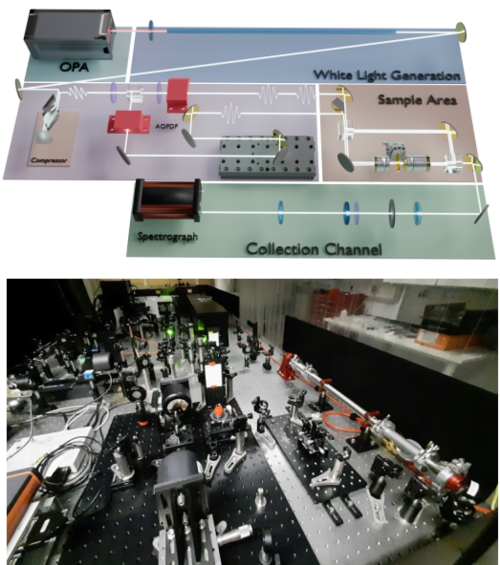Our Research
We use ultrashort light pulses to initiate, probe and ultimately control electronic dynamics in emerging materials.
Materials platforms
- Molecules on 2D materials, as part of SFB 1772
- 2D magnets and TMDC-based spintronic heterostructures, as part of TRR 227
- Quantum materials, as part of FOR 5750
- Photonic structures (e.g. metasurfaces)
A common challenge in all of these materials is the inherent presence of electronic disorder. This disorder can arise from static heterogeneity (defects, cracks) or dynamical fluctuations (due to phonons or spins fluctuations for example). This often critically affects electronic properties and ultimately performance in applications.
My group wants to identify the sources of electronic disorder by revealing the microscopic energy dissipation channels in nanomaterials. And for this we develop tools such as multi-dimensional spectroscopy, which can reveal the origin of electronic disorder in materials and study electronic quantum dynamics with a temporal resolution of 15-30 fs.
Our tools
Scheme of our coherent two-dimensional spectroscopy experiment, and how it looks in the lab
Image Credit: Trideep Kawde
We have built a coherent two-dimensional spectrometer tunable over the visible and near-IR (475 – 950 nm) ranges, delivering 15-fs pulses at the sample position. A special feature of our setup is its sample area, which is optimized for 2D materials, featuring small sizes of only a few tens of microns, as well as large heterogeneity. We assembled a home-built confocal microscope in the detection line, which we can use for real or k-space imaging but also linear spectroscopy (reflectivity, PL, absorption).
Another tool we built is angle-resolved spectroscopy, to image polariton dispersion or dipole orientation in nanomaterials. This is a very powerful technique to investigate metamaterials or exciton-polaritons. You can see a recent example here.

